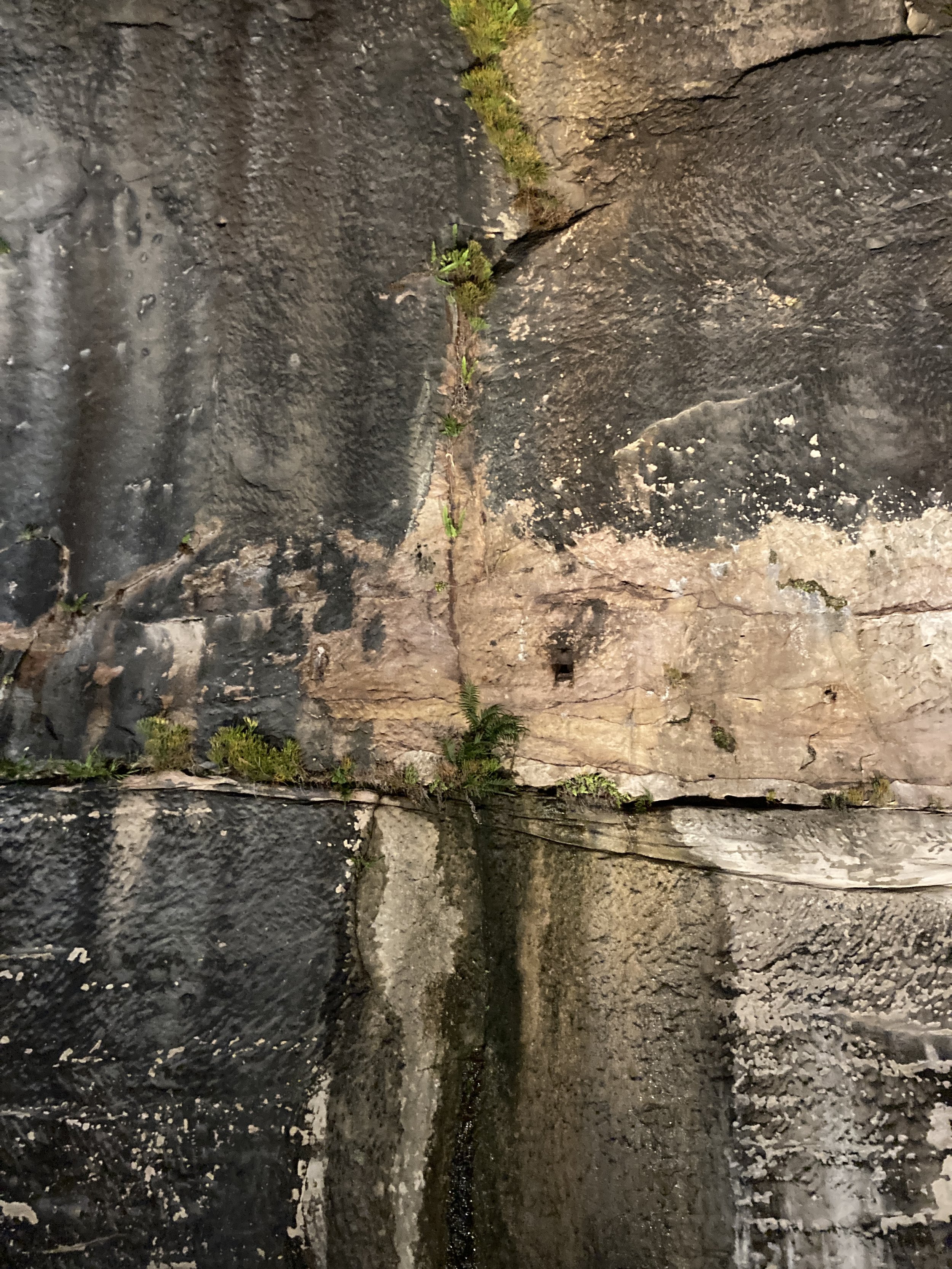TARN was invited to contribute to Salone De Mobile [SYD], an exhibition at the Tin Shed Gallery, University of Sydney in February 2024.
The exhibition constituted works by a range of renowned and emerging architecture and design practices. The brief to produce a mobile of some description that investigated an aspect of their practice or research interests.
Plant as memory / Plant as persistence
Architecture as displacement / Architecture as substrate
In high-density urban Sydney, a handful of plants carve out life on and in architecture. Some are introduced weeds, but others are indigenous species that represent the residue of the pre-European flora of Sydney. They capitalise on imperfection, inhabiting flaws, defects, and decay. A bubble or crack in the mortar; a structural flaw in concrete; anthropogenic detritus.
These plants originate from natural places that are analogous to their newfound lodgings: sandstone outcrops, cliff-faces, tree trunks and the like. Botanically speaking, they are lithophytes, chasmophytes and epiphytes: Rock-, crevice-, or plant-dwelling plants… As such, their existence hints at the landscape of the past. We suggest that perhaps we could coin a new term for this rag-tag bunch of species: ‘caementophyte’, literally ‘mortar/cement/rubble-plant’.
Dispersed by wind, or by bat or bird faeces, these species demonstrate that ecological processes still prevail, despite our rude debasement of this landscape.
Like native Sydney birds such as the ibis, seagull and the noisy miner, these plant species have carved out a novel existence, prevailing in a synthetic, fabricated landscape.
This work – which contains several of the species mentioned – is an attempt to highlight the persistence of plants in the face of destruction. We suggest it presents architecture in an interesting light: both as the mechanism of environmental displacement, and yet also the hosts of that which remains.
SPECIES LIST
Psilotum nudum Whisk fern
Pteris vittata Ladder Brake
Ficus rubiginosa Damun (Darug language) / Port Jackson Fig
Asplenium australasicum Birds Nest Fern
Microsorum pustulatum Kangaroo Fern
Christella dentata Binung
Photographs above by Maja Baska, Column York and Hamish Mcintosh. Photographs below by Robert Champion
The indigenous Pteris vittata frequently exploits cracks in brickwork or concrete around Sydney, and in our observations appears to be the most abundant 'caementophyte’, native or otherwise.
Whisk fern (Psilotum nudum) is neither a fern, nor a whisk, but rather a lineage of bryophyte all its own. It has a cosmopolitan distribution, being native to the Americas, Japan, Australia, New Zealand, south east Asia, and perhaps other places.
Exposed ‘roots’ of Psilotum nudum are actually rhizomes (stems), as this species lacks true roots.
An association of Ficus rubiginosa, Microsorum pustulatum and the invasive Nephrolepsis cordifolia, Redfern.
Juvenile Asplenium australasicum & Pteris vittata. As with most ferns, their spores are are largely wind-dispersed. Comprising only a single cell, fern spores can travel long distances: Although most fall nearby the parent plant, there is evidence that some may travel hundreds or even thousands of kilometres given the right conditions.
A juvenile Ficus rubiginosa growing out of a neighborhood art installation, Darlington. Dispersed by either a bat or a frugivorous bird such as a currawong or pidgeon species, their seeds are small and often stick when ejected as faeces, and thereby increasing their likelihood of being caught in an elevated crevice of some description.
Juvenile Ficus species on a train overpass, Erskineville. Ficus species typically start their lives as lithophytes or epiphytes, growing on rocks or trees before sending roots down into soil to reach maturity. Therefore the early stages of their life strategy is imminently suitable to a life on architecture.
Population of Brake Fern (Pteris vittata) on a train overpass, Erskineville.
Colony of Psilotum nudum and Pteris vittata on the second story of an apartment building in Petersham.
Directly facing the Sydney Opera house, several ‘caementophytes’ inhabit the crevices of the sandstone cutting that separates Bennelong lawn from the Opera House forecourt. Includes Psilotum nudum, Pteris vittata, as well as introduced weeds such as fishbone fern (Nephrolepsis cordifolia)
Asplenium australasicum and what appears to be Microsorum pustulatum growing under a shop awning in Waterloo

















